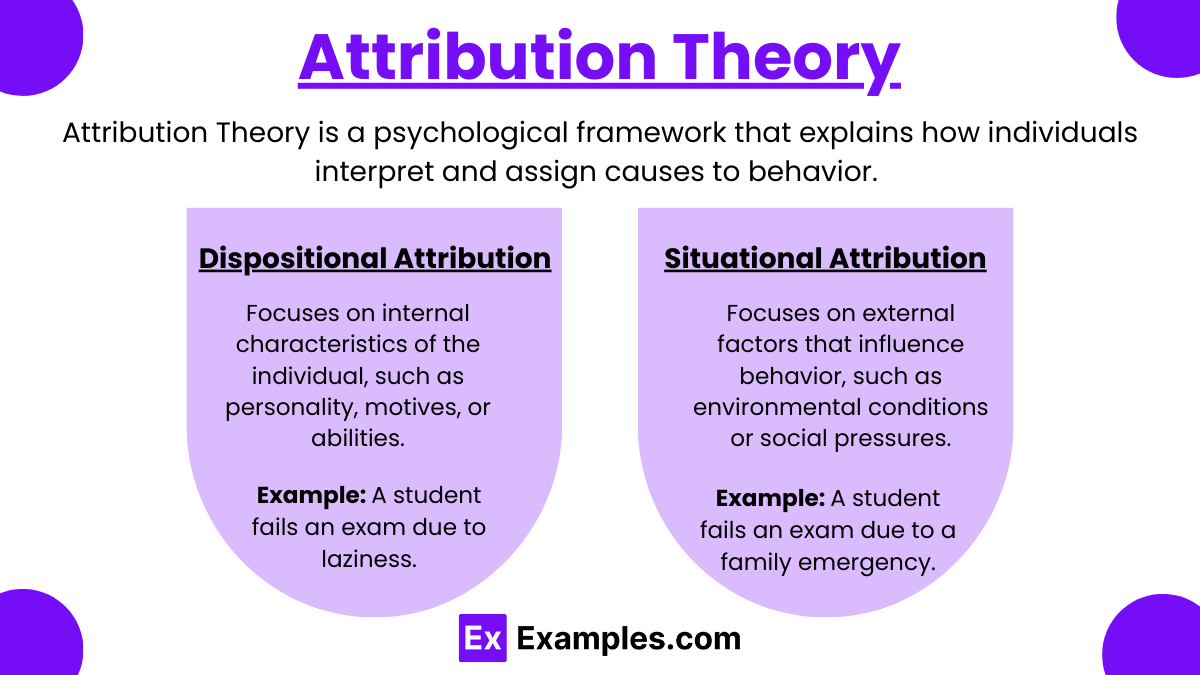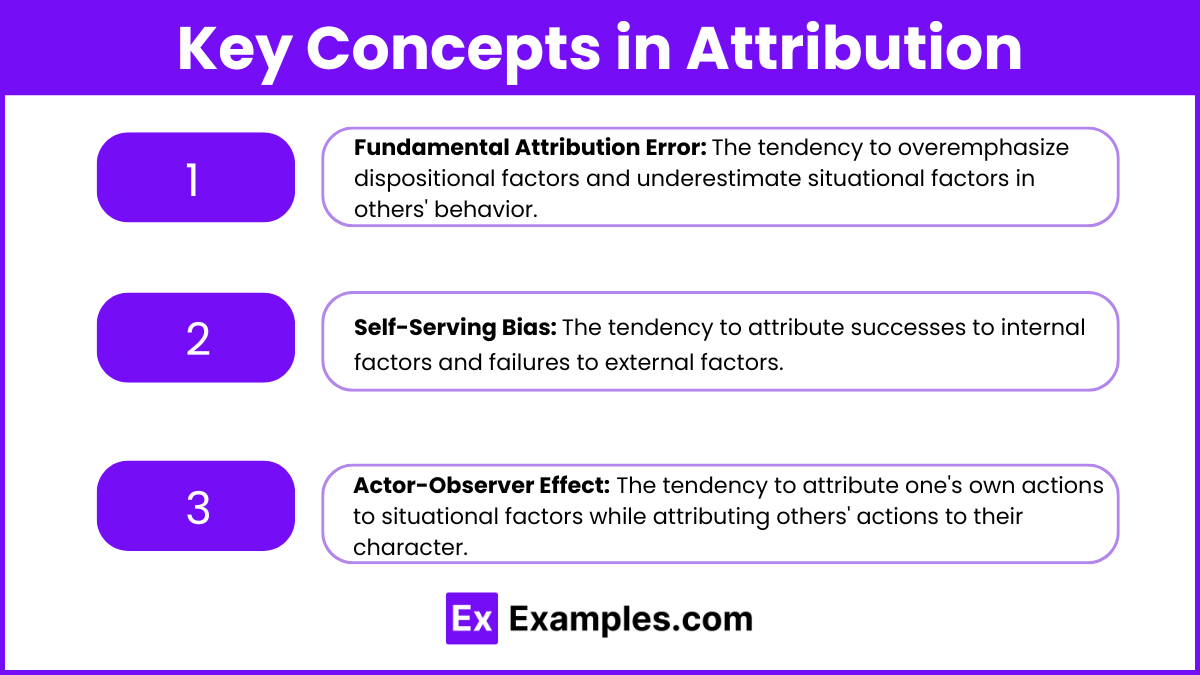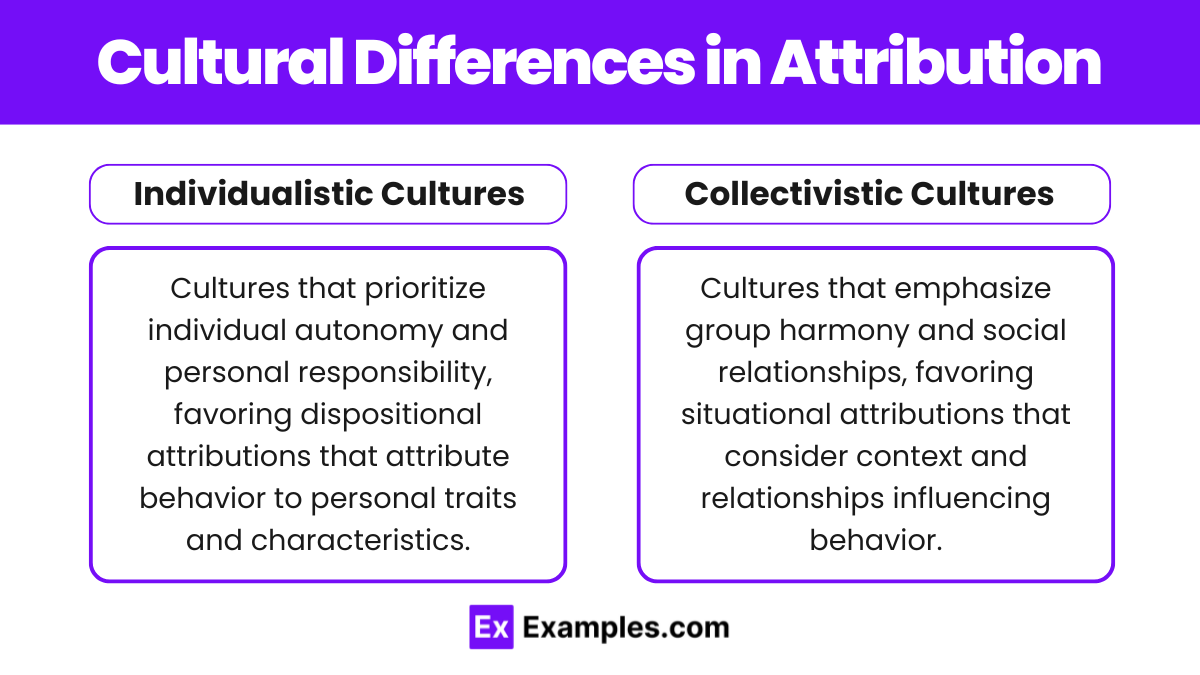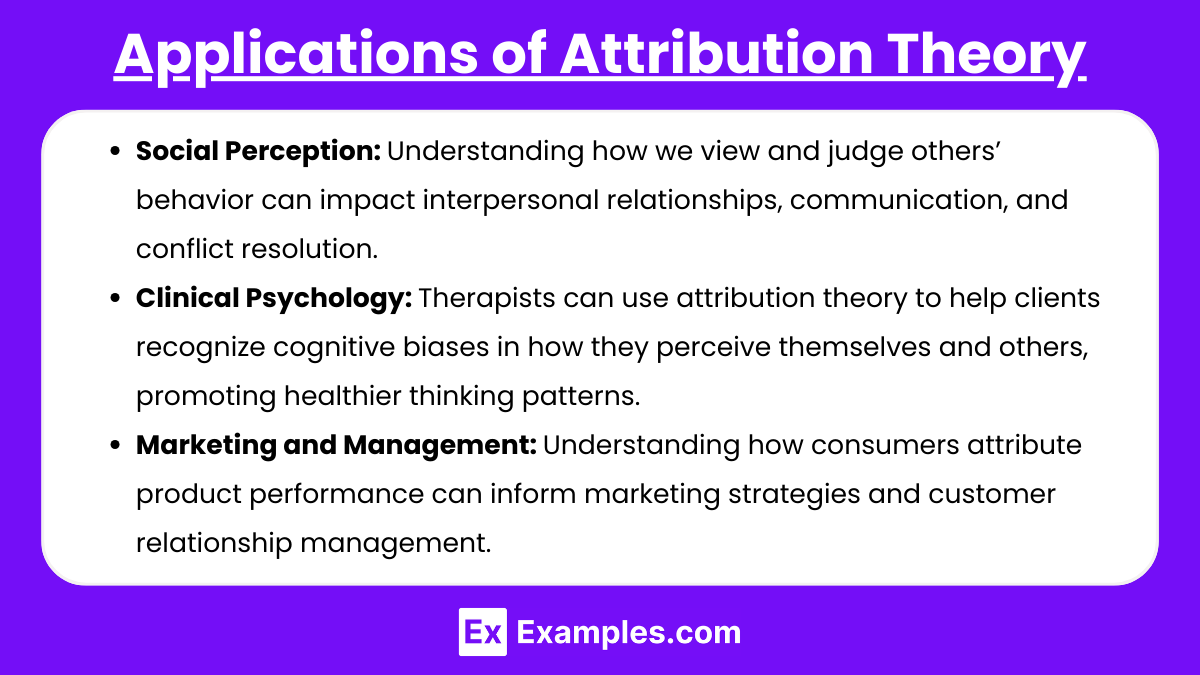"Attributing Behavior to Persons or Situations" examines how people explain actions by assigning causes to either personal traits or external circumstances. This process, known as attribution, is crucial for understanding social interactions and judgments. People may use dispositional attribution (focusing on personality or character) or situational attribution (considering environmental factors) to interpret behavior. This distinction influences perceptions and can lead to biases, like the fundamental attribution error, where individuals often blame others' actions on personal traits while attributing their own actions to circumstances. Recognizing these biases enhances awareness of how people assess actions in various contexts.
Learning Objectives
In studying "Attributing Behavior to Persons or Situations" for the MCAT, focus on understanding how attributions help explain the causes of behaviors, specifically the distinction between dispositional (personal) and situational (external) attributions. Analyze cognitive biases such as the Fundamental Attribution Error, where there’s a tendency to overemphasize personality traits in explaining others’ actions, and Self-Serving Bias, which involves attributing successes to oneself and failures to external factors. Examine cultural variations in attribution, noting differences between individualistic and collectivistic societies in explaining behavior. Investigate the implications of attribution theory for social perception, prejudice, and judgment, and understand how these processes impact interpersonal relationships and decision-making. Finally, connect these themes to broader concepts like bias and social cognition to gain a comprehensive understanding of their role in shaping human interactions, crucial for interpreting social dynamics on the MCAT.
1. Attribution Theory

Attribution theory explains how individuals interpret and understand the causes of behavior. This theory is divided into two main types of attributions:
Dispositional Attribution:
Focuses on internal characteristics of the individual, such as personality, motives, or abilities.
Example: If a student performs poorly on an exam, one might attribute the failure to lack of intelligence or poor study habits.
Situational Attribution:
Focuses on external factors that influence behavior, such as environmental conditions or social pressures.
Example: The same student might be seen as having a poor exam performance due to a stressful life situation or difficulty with the exam format.
2. Key Concepts in Attribution

Fundamental Attribution Error:
The tendency to overemphasize dispositional factors and underestimate situational factors when explaining others' behavior.
Example: Observing someone failing to help in an emergency and attributing it to their lack of compassion rather than considering possible situational constraints (e.g., fear, confusion).
Self-Serving Bias:
The tendency to attribute our successes to internal factors and our failures to external factors.
Example: A student who aces a test might attribute their success to intelligence (internal), while a failure might be blamed on poor teaching (external).
Actor-Observer Effect:
The tendency to attribute one's own actions to situational factors while attributing others' actions to their character.
Example: If you were late to a meeting, you might attribute it to traffic (situation), but if someone else is late, you might think they are disorganized (disposition).
3. Cultural Differences in Attribution

Different cultures may have distinct tendencies in attribution:
Individualistic Cultures (e.g., Western societies):
More likely to favor dispositional attributions, focusing on individual agency and responsibility.
Collectivistic Cultures (e.g., many Asian societies):
More likely to consider situational attributions, emphasizing the context and relationships influencing behavior.
4. Applications of Attribution Theory

Social Perception: Understanding how we view and judge others’ behavior can impact interpersonal relationships, communication, and conflict resolution.
Clinical Psychology: Therapists can use attribution theory to help clients recognize cognitive biases in how they perceive themselves and others, promoting healthier thinking patterns.
Marketing and Management: Understanding how consumers attribute product performance can inform marketing strategies and customer relationship management.
Examples
Example 1. Work Performance Assessment
During an employee evaluation, a manager observes that an employee consistently completes projects late. If the manager attributes this to the employee's laziness or lack of dedication (internal attribution), they are using a dispositional perspective. Alternatively, if the manager considers that the employee is handling multiple complex projects simultaneously and attributes the delays to an overburdened workload (external attribution), they are focusing on situational factors. This decision can impact the feedback and support provided.
Example 2. Student Exam Scores:
A teacher notices that one of her students scored poorly on a recent test. By making an internal attribution, she might conclude that the student is not studying enough or lacks motivation. However, if she considers that the student has been facing family issues or health challenges recently, she may attribute the performance to external factors. This distinction helps the teacher decide whether the student needs motivational support or additional resources.
Example 3. Traffic Incident Perception:
While driving, a person witnesses another driver suddenly swerving and almost causing an accident. An internal attribution might lead them to assume that the driver is reckless or inattentive. On the other hand, considering an external attribution, they might hypothesize that the driver swerved due to an unavoidable road hazard. This interpretation can influence their emotional reaction and potential road behavior afterward.
Example 4. Social Gathering Dynamics:
At a party, someone notices a person sitting alone and appearing uninterested in mingling. An internal attribution might suggest that the individual is introverted or unfriendly. However, a situational attribution might consider that the person may be unfamiliar with the other guests or feeling uncomfortable in social situations. Recognizing this can change whether one chooses to approach or assist the person.
Example 5. Romantic Relationship Conflict:
In a disagreement, one partner might perceive the other's irritability as an inherent characteristic, concluding they are simply a short-tempered person (internal attribution). However, if they consider the possibility that their partner had a challenging day at work or is under significant stress (external attribution), they might respond with more empathy and understanding, altering the conversation's tone and outcome.
Practice Questions
Question 1
An individual attributes their coworker's lateness to the coworker's careless attitude rather than considering traffic conditions.
A. Situational attribution
B. Dispositional attribution
C. Fundamental attribution error
D. Self-serving bias
Answer
C. Fundamental attribution error
Explanation
This scenario illustrates the fundamental attribution error, where people tend to overemphasize personal traits (dispositional factors) and underemphasize situational factors when explaining others' behaviors. Instead of considering that traffic might have delayed the coworker, the individual assumes lateness is due to the coworker's inherent character flaw. Dispositional attribution (B) focuses on personality traits, but the fundamental attribution error involves a cognitive bias of neglecting situational factors. Thus, C is correct, as it highlights the cognitive error made by the individual when attributing behavior.
Question 2
An employee who has recently been promoted attributes their success to their hard work and skills. When they encounter failure, however, they blame external factors such as inadequate resources.
A. Self-serving bias
B. Actor-observer bias
C. Dispositional attribution
D. Just-world hypothesis
Answer
A. Self-serving bias
Explanation
The employee demonstrates a self-serving bias, a common cognitive bias where individuals attribute successes to internal factors (like personal skills or effort) and failures to external factors (like inadequate resources). This bias helps protect self-esteem by allowing individuals to take credit for positive outcomes while avoiding blame for negative ones. Actor-observer bias (B) involves explaining one’s behavior through situational factors while attributing others’ behaviors to dispositional factors, which does not apply here since the focus is solely on the individual's own attributions. Thus, A is correct.
Question 3
A student attributes their poor exam performance to the difficulty of the questions, while attributing their friend’s poor performance to lack of preparation.
A. Actor-observer bias
B. Self-serving bias
C. Situational attribution
D. Just-world hypothesis
Answer
A. Actor-observer bias
Explanation
This scenario represents the actor-observer bias, where individuals attribute their own behavior to situational factors (e.g., exam difficulty) but attribute others' behavior to dispositional factors (e.g., lack of preparation). This bias arises because individuals view their own behavior as influenced by external situations, while perceiving others’ actions as rooted in personal characteristics. Although situational attribution (C) applies to how the student explains their own performance, the broader pattern of attributing different causes for their friend’s outcome points specifically to actor-observer bias.


